We learned to make this deliciously flavoured and hearty soup in Perugia, Umbria from two companionable ladies who have been making it for many years, and eating it for longer. Of all the local dishes we learned to make with Nonie and Tita, this is the one I’ve made several times since, with the Umbrian-grown chickpeas we brought home with us while stocks lasted, and latterly with ones imported from elsewhere. It’s a keeper: simple to make, nutritious and economical, filling without being too caloric, extremely satisfying and interesting — it tastes even better the day after it’s made (and freezes well, too). It exactly suits my requirements at the moment, making a reluctant entry into winter a little easier to bear.
Using the cooking liquid from the chickpeas as the basis of the broth adds so much flavour, and makes one appreciate how good chickpeas (‘ceci’ in Italian) can be when they are grown well and get the attention they deserve in the kitchen. Dried chickpeas are the tastiest, but you do need to think ahead and give them a night (or day) to soak and then boil until tender before you can make this soup. As a speedy alternative you can use tinned, or for better flavour at a price, jarred chickpeas.
It’s the generous addition of rosemary, in company with garlic, bay leaf, a little chilli pepper, and an excellent olive oil, that elevates this soup from a bland bean soup to something to look forward to. As with much of the best Italian food, it relies on a few excellent ingredients, the cultural knowledge of what flavours enhance each other, and what cooking methods will bring out their best. We learned several tips and techniques from our hosts, and were astonished at the flavours they managed to extract from these few basic ingredients.
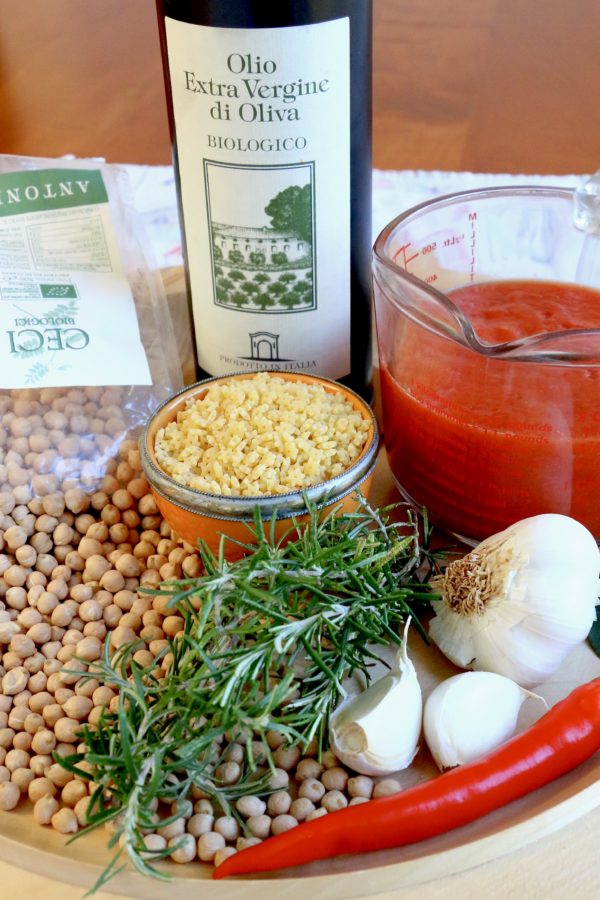 The rosemary in Umbria was the most strongly flavoured and aromatic I’ve had. My old rosemary plant here in England can’t compare for intensity, so I find I need to use more at home than Nonie and Tita did to reproduce the flavours they achieved in Perugia. Rosemary is a tricky herb, and too much can be overpowering, but what made this soup remarkable was the intensity of the herb; so for this, you can be a little bold with it. Our bowls were served to us garnished with another good sprig to add a further herbal hit.
The rosemary in Umbria was the most strongly flavoured and aromatic I’ve had. My old rosemary plant here in England can’t compare for intensity, so I find I need to use more at home than Nonie and Tita did to reproduce the flavours they achieved in Perugia. Rosemary is a tricky herb, and too much can be overpowering, but what made this soup remarkable was the intensity of the herb; so for this, you can be a little bold with it. Our bowls were served to us garnished with another good sprig to add a further herbal hit.
One of the top tips we learned from the experts was the trick of making a ‘soffrito’ (Italian for ‘slowly fried’), which in many other parts of Italy means the ‘holy trinity’ of onion, carrot and celery, with the addition of garlic, as the basis of most soups and sauces. Nonie and Tita report that in Umbria, however, onion and garlic are seldom used together, and the typical soffrito preparation for this soup is more simply a generous amount of rosemary, some garlic, bay, and red chilli pepper cooked slowly in good olive oil before a tomato passata is added. Once the herbs have imparted their flavours to the tomato purée, the resulting flavourful sauce is strained into the soup to avoid importing bits of garlic, chili, and whole rosemary leaves, which are unpleasantly like pine needles if left whole. 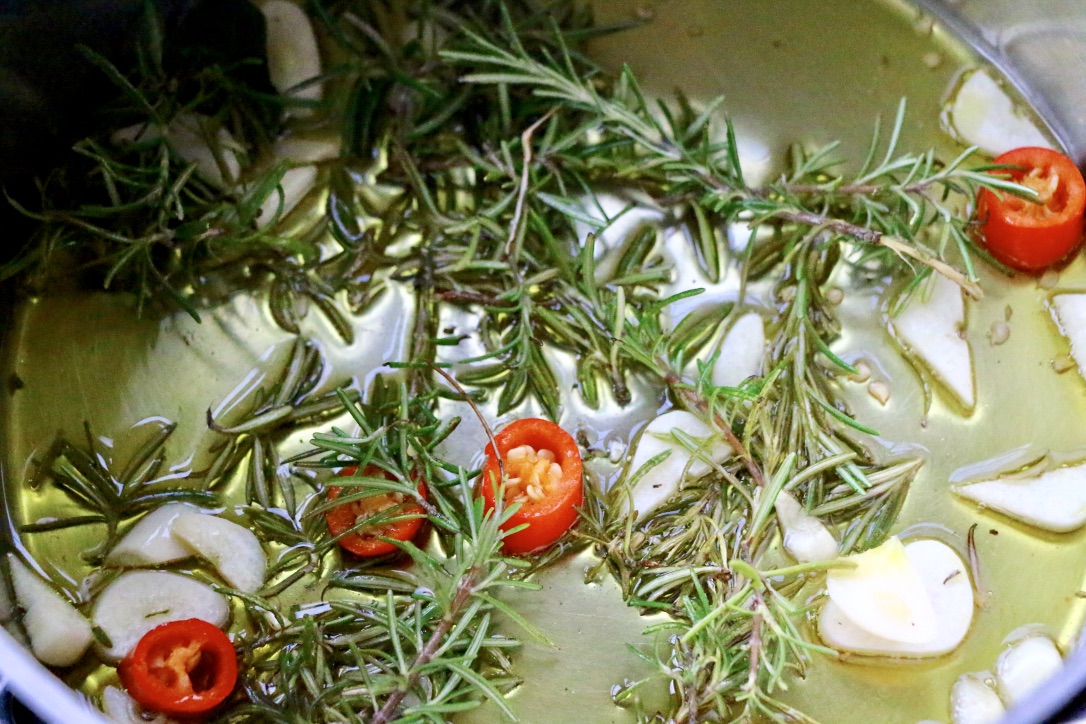 Our hosts made a bouquet garni of the herbs, but I’ve taken to warming them with the oil simply scattered loose in the pan, as the soffrito has to be strained anyway. Even when I’ve made a bouquet garni tied tightly with string, the rosemary leaves seem to escape, so unless you don’t mind encountering them as you eat, you’ll have to take this extra step and strain the soffrito.
Our hosts made a bouquet garni of the herbs, but I’ve taken to warming them with the oil simply scattered loose in the pan, as the soffrito has to be strained anyway. Even when I’ve made a bouquet garni tied tightly with string, the rosemary leaves seem to escape, so unless you don’t mind encountering them as you eat, you’ll have to take this extra step and strain the soffrito.
This is a hearty, thick soup. Noni and Tita said it should be thick enough for a spoon to almost stand up in it. I actually like it a little thinner as the broth itself has an excellent flavour and a lot of body. Taste as you finish the soup and please yourself. The soup is always finished, we were told, with a glug of best olive oil.
NB: KEEP the water you boil the chickpeas in, as this makes the stock required for the soup. You may not need all of it, but keep it until you serve, as the soup continues to thicken as it sits and it’s useful to have the option of adding more liquid right until serving time. (if you prepare the soup ahead the pasta will continue to swell and thicken the soup).
Our thanks to Nonie and Tita of Umbria Cooks 4 You, for being so generous with their hospitality and knowledge.
Recipe
Umbrian chickpea and pasta soup
Serves 3-4 (can easily be doubled)
Adapted from the recipe taught by Nonie and Tita of Umbria Cooks4You
Ingredients
- 250g (9 ounces or a 1½ level cups) dried chickpeas
- Water to soak them for 12 hours
- 2 litres (2 generous quarts) of water to boil the chickpeas and make the stock—use no salt to boil (If doubling the recipe to use 500g / 1 pound 2 ounces of dried chickpeas, increase the boiling water to 3½ litres (3 quarts plus 3 cups).
- 2 tablespoons extra-virgin olive oil for cooking the soffrito, and more for garnishing the finished soup
- About 6 sprigs of rosemary, with more to garnish
- 3 large cloves garlic, minced
- ½ to 1 whole red chilli pepper
- 1 bay leaf
- 1½ cups tomato passata with no added herbs (or purée one 400g /14-ounce can of chopped tomatoes in sauce)
- 1 tablespoon flaky sea salt such as Maldon, with more as required to finish the soup
- Black pepper to taste
- 90g (½ cup) of small dried pasta such as stellate (little stars), or use broken spaghetti
Directions
- Rinse and pick over the chickpeas, and then drain them into a large saucepan; cover with plenty of water and soak for 12 hours.
- Drain and rinse the soaked chickpeas, which will be about twice their original size after soaking. Discard the soaking liquid.
- Put the chickpeas back in the saucepan and cover them with the 2 litres of fresh water and bring to a boil over medium-high heat. Reduce the heat to a gentle simmer and continue to cook under the chickpeas are completely tender, about 40 minutes, skimming off any foam as they cook. Add NO salt while the peas are cooking. Allow them to cool to room temperature in the cooking liquid (this discourages them from bursting their skins and becoming raggedy).
- While the chickpeas are cooling, prepare the soffrito: In a separate saucepan, gently heat together the olive oil, rosemary, garlic, bay leaf and red chilli pepper until they are gently sizzling and aromatic; Cook gently for about 10 minutes, stirring frequently, to make sure the herbs don’t scorch or take on much colour. Add the passata (or tomato purée) into the pan with the herbs and continue to cook gently at a low simmer for another 10 minutes.
- Once the chickpeas have cooled, drain them through a colander or sieve and SAVE THE COOKING LIQUID in a separate saucepan or bowl. Return about half the chickpeas to the saucepan they were cooked in, off the heat for now, and add about 500ml (2 cups) of the cooking liquid. Using an immersion blender (stick blender), blitz the chickpeas in the liquid until you have a thin, smooth, purée (or use a food processor or blender to do this job and return the purée to the saucepan). Now add the rest of the cooked chickpeas to the pan with the purée. The idea is to keep some whole, while the base has a smooth and thicker quality.
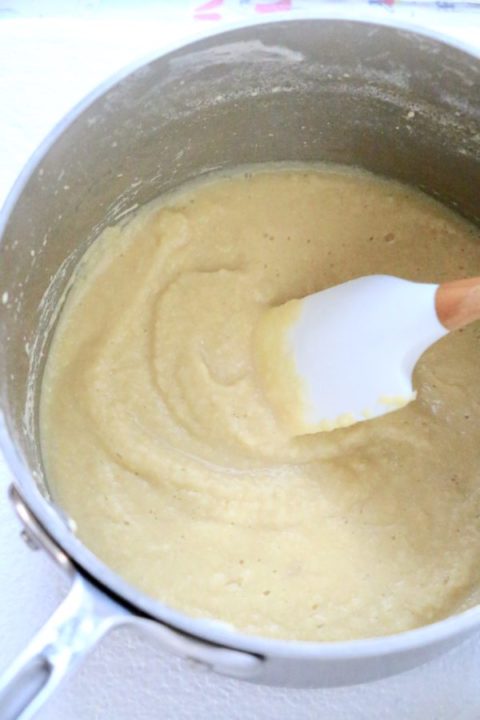
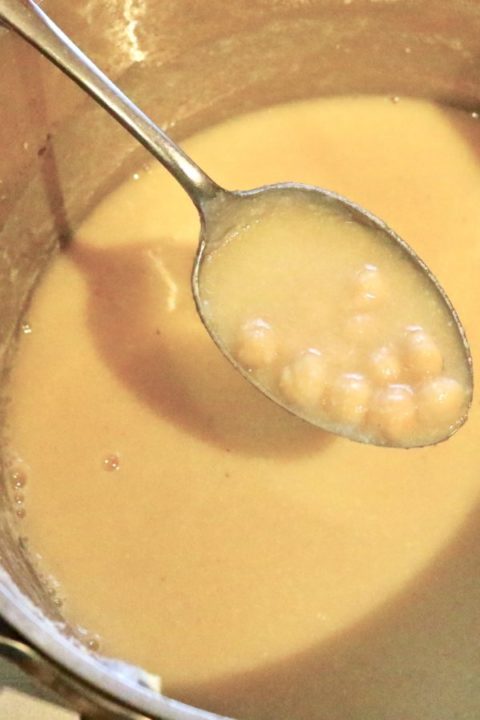
- Now strain the softened herb soffrito into the soup by setting a sieve over the saucepan to catch all the rosemary leaves, bay leaf, garlic, and red chilli pepper. Push with a spoon against the sides of the strainer to extract as much flavour as possible into the soup.
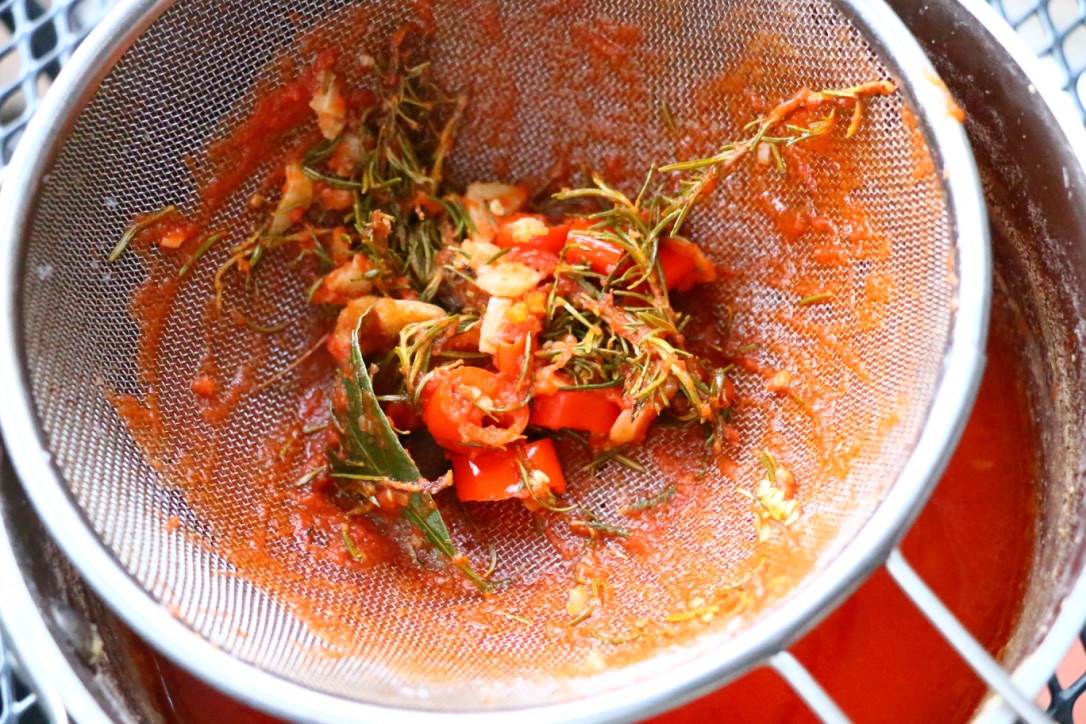
- Stir the soup over medium heat and bring it gently to the boil. Add half the salt and taste the soup (after letting a spoonful cool down) to judge the intensity of flavour, the seasoning, and texture of the broth. Add more of the cooking liquid if the soup looks too thick; the addition of pasta will thicken it considerably.
- With the soup at a gentle boil, add the pasta, more of the salt as needed, and stir occasionally to keep the pasta from sticking. Keep an eye on the pot as the pasta cooks, about 10 minutes or until it is tender. and add more of the cooking liquid if you feel it needs it. Taste once more for final seasoning, and make any further adjustments as required (see tips, below).
- Serve piping hot in warmed bowls, topped with a glug of the best olive oil in the house, some finely chopped red chilli pepper, and a rosemary sprig or judicious sprinkling of very finely chopped rosemary leaves.
- The soup will hold well for a few days in the fridge, and improve in flavour the day after it’s cooked. It will also thicken as the pasta continues to swell, so ensure you keep the remaining cooking liquid to add as required before re-heating. Nonie and Tita suggest serving the soup with bruschetta toasted with olive oil and a sprinkling of herbs.
Tip for correcting the flavour balance of the soup:
Chickpeas, or indeed any dried legume or pulse, need a lot of flavouring and a lot of seasoning. Don’t be afraid to adjust with extra ingredients such as a judicious addition of a good garlic power, or with a little extra chilli or chilli oil if you need it. Add more rosemary if yours isn’t full of flavour; if you feel it needs more at the end, mince the needles very finely as they can be unpleasant to chew if they are whole. You can also add another minced clove of garlic to the soup as the pasta is cooking if you feel the broth is too subtle.
Other soup recipes on Crumbs on the Table:
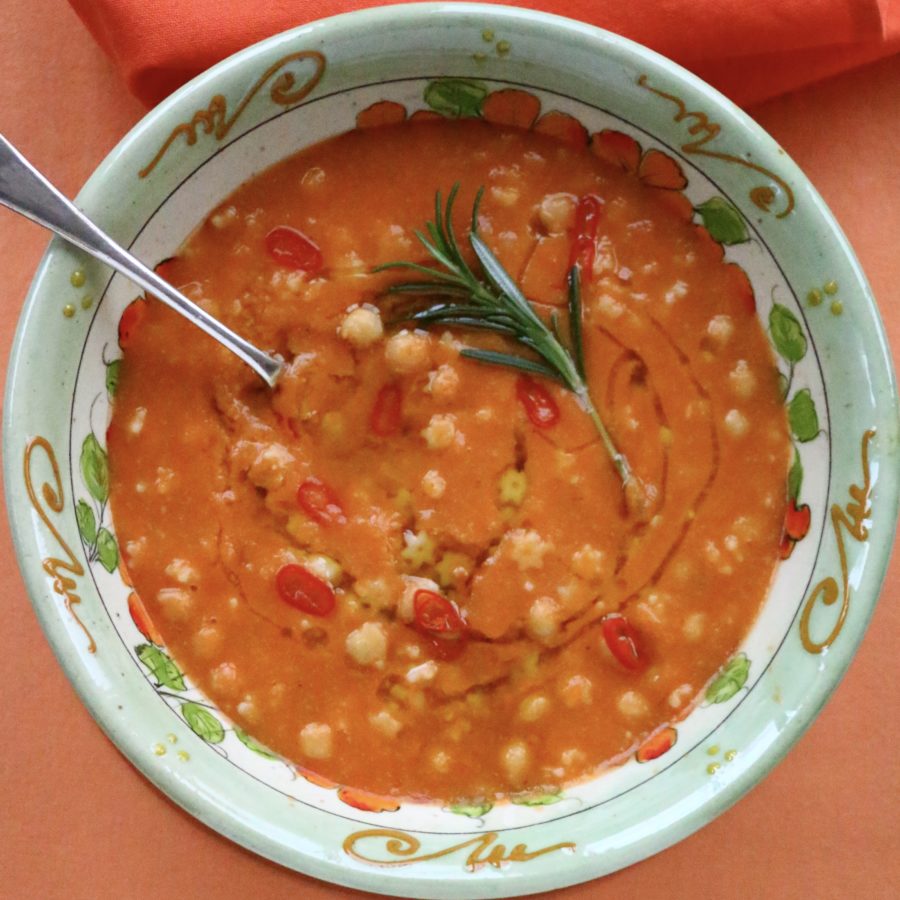
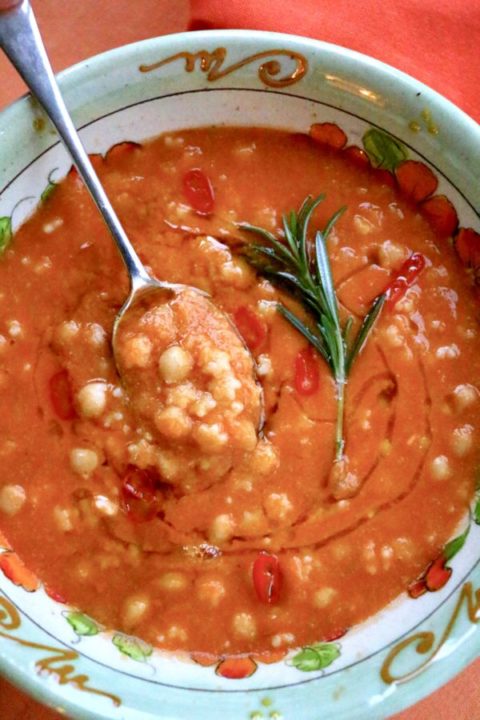
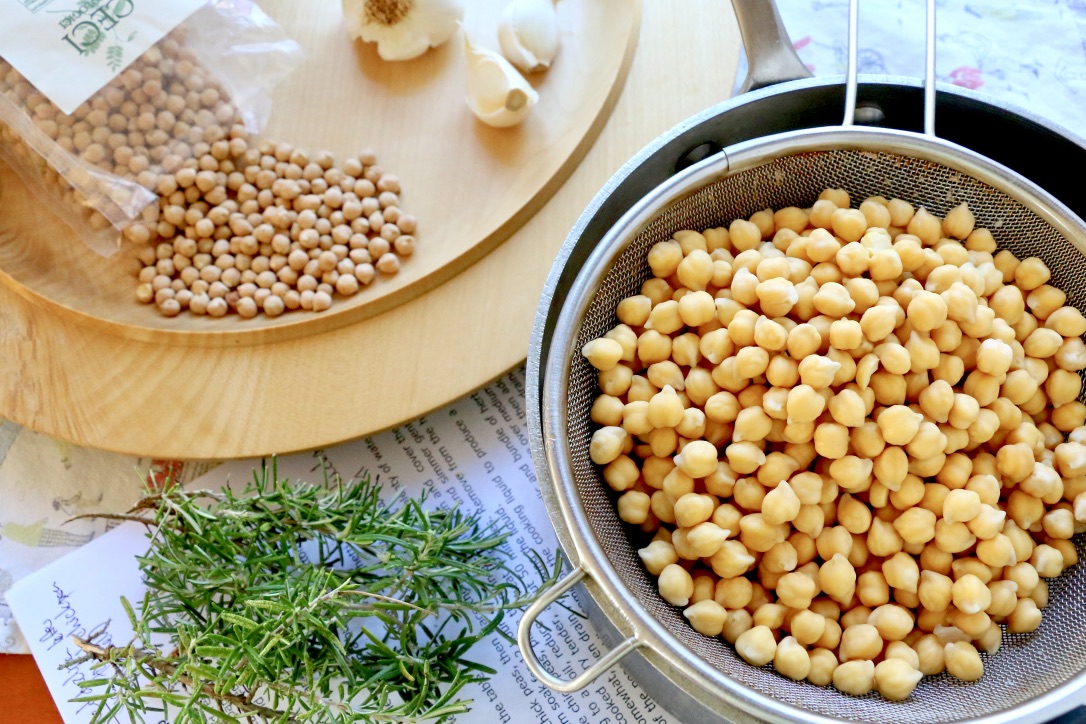
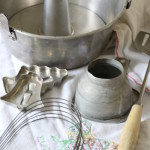

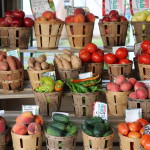
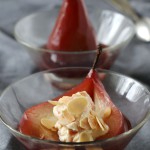
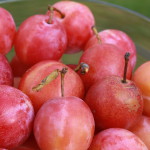
 Tour D’Argent: a remembrance of things past at today’s prices
Tour D’Argent: a remembrance of things past at today’s prices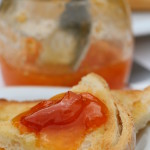 Apricots, les abricots
Apricots, les abricots I used to cook in a piggery
I used to cook in a piggery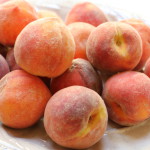

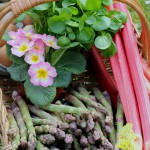


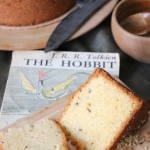 Seed cake and story
Seed cake and story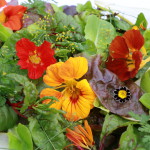
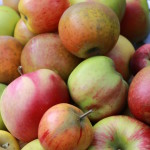
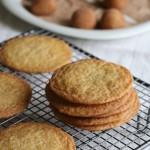

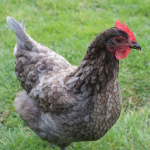

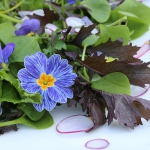


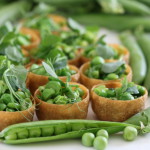

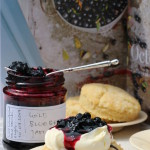
 Easter is late this year
Easter is late this year
Delicious recipe (as ever), thanks. This has been superb over the last 3 days! That rosemary is brilliant, classically illustrating the Italian understanding of what works together so well.
Dan, I’m so pleased you tried it and liked it. I agree: it’s got generations of understanding in it of what flavours make the most of each other. Such a resourceful use of the best of a place. Thank you so much for your kind comment. Lovely to hear from you!